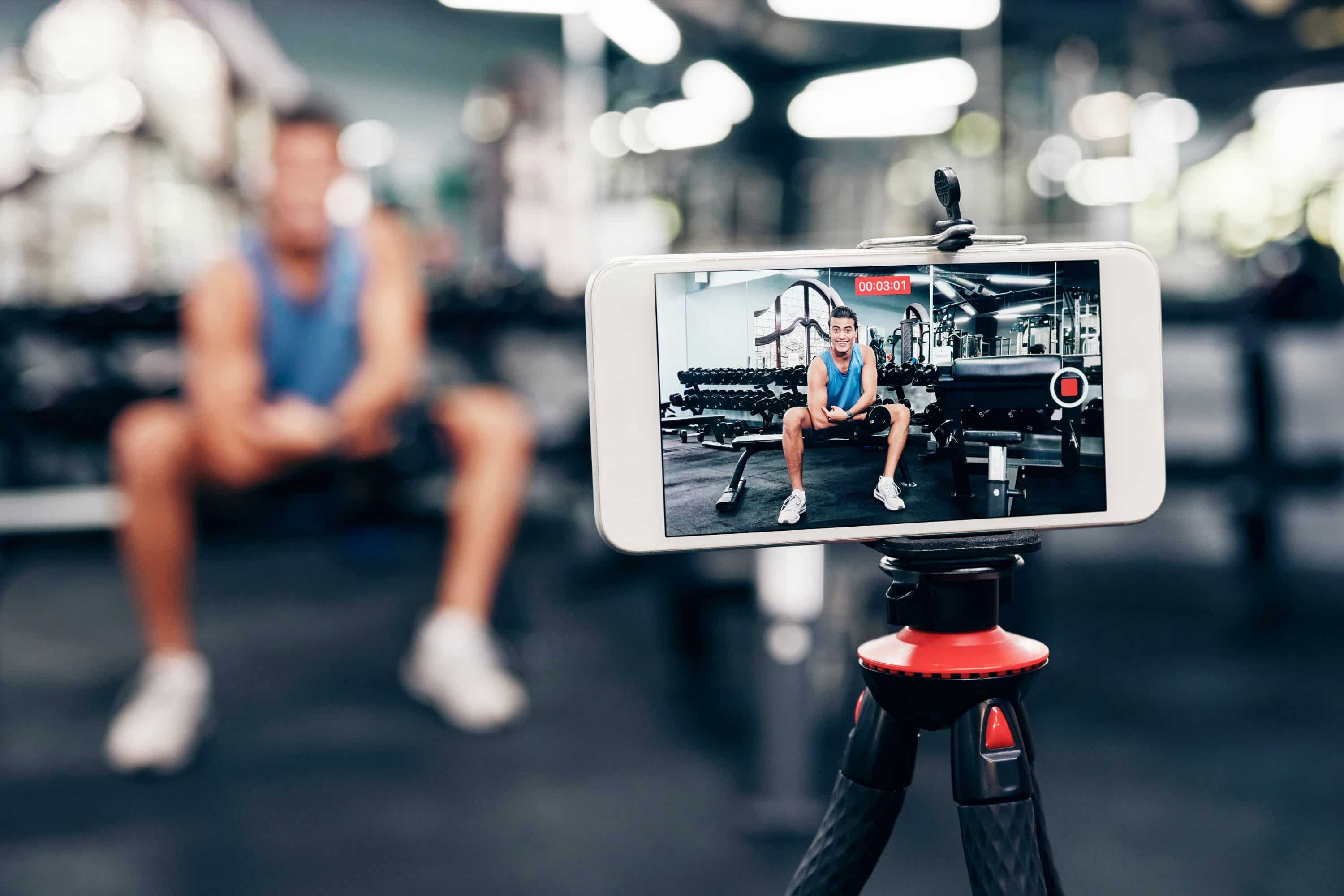Leveraging the virality of social media, the latest trend in marketing elevates brands by using modern celebrity appeal – and their trusted voices – to infinitely expand their reach and convert followers into consumers. These authentic endorsements are often wrapped up in highly engaging content either establishing or jumping aboard current online trends.
Influencer marketing also allows brands to gain access to user-generated content which they can use across their own social media platforms. Acting as a testimonial or review (read: social proof), content produced by influencers often spruik a product or service, with the poster encouraging their audience to commit to a purchase.
In a world where these trends move at lightning speed, what’s not to love about having somebody stay on top of it all for you?
Times, they are a-changin’
The concept of the influencer is rooted in the early 2000s, and while not exclusively, largely due to the rise of YouTube. The video-sharing platform allowed individuals to create content for a global audience, with interaction encouraged in the comments section. Early YouTube creators, such as vloggers, gamers, and makeup artists, began to amass followings of hundreds of thousands, and brands soon recognised the marketing potential of these influential content creators. As a result, they started collaborating with YouTubers to promote their products and services.
However it wasn’t until 2013, when Instagram (originally a photo-only platform) shook up its business model and introduced videos, resulting in its spike in popularity, that this became a viable option for creators as a source of income. Once that avenue was realised, the influencer arrived on the scene with a bang. During this time, influencer marketing was most popular in the fashion, beauty, and lifestyle industries. Amongst others, Chiara Ferragni, Kylie Jenner, and Casey Neistat all emerged as influencer trailblazers. These sectors naturally lent themselves to visual content, making Instagram a fertile ground for early influencers to showcase products and endorse brands.
Over the years, influencer marketing has transcended its origins and expanded into every industry imaginable, including technology, food and beverage, wellness, fitness, sports, parenting, education and even petfluencers. We’ve also seen those with established celebrities pre-dating social media become online phenomena, such as Neil DeGrasse Tyson and Gordon Ramsay.
This growth was partly due to the recognition that influencers exist within various niches, each with its own unique audience. As a result, brands now collaborate with influencers who align with their products or services, creating more authentic and effective marketing campaigns.
Choose your fighter
While you don’t have to go far on the internet to find a wealth of influencers, you may need to look at specific platforms to fulfil certain niches. For instance, beauty, fashion, and lifestyle influencers are still popular on Instagram, while keen gamers might seek out platforms like Twitch and YouTube. However the two key players in the world of influencer marketing are the reigning champ, Instagram and (not-so) newcomer, TikTok. Each has its own distinct characteristics and strategies.
Instagram allows influencers to curate aesthetically pleasing feeds and post highly polished photos and videos, often complementary to one another. Influencers on Instagram often produce content that feels more intentional and aspirational.
On the other hand, TikTok, with its short-form video format and younger user base, has gained immense popularity for promoting products and engaging audiences in a more vibrant and entertaining manner. TikTok influencers often rely on humour, creativity, and relatability to connect with their followers. So, influencer marketing on TikTok leans into raw, unfiltered, and authentic content. Influencers on this platform might also lean into niche topics, leading to the emergence of new hashtags such as #cleantok and #booktok have since emerged.
You can read up on other ways TikTok may be beneficial to your brand here.
Looking into our crystal ball
Looking ahead, we at SOAK Creative see the future of influencer marketing as being poised for continued growth and evolution. Over the next 12 months, we expect several trends to shape the world of influencers:
- Niche micro-influencers – Brands are likely to increasingly collaborate with micro-influencers who have smaller but highly engaged and specialised niche audiences. These influencers offer an added layer of authenticity as audiences seek an authority who is demonstrably invested in their area of interest.
- Video dominance – Following the eruption of short-form video content introduced by TikTok, this medium will continue to reign supreme, with live streaming gaining traction across all major platforms. Brands will opt to explore more interactive and immersive video experiences.
- Sustainability and social responsibility – Consumers are increasingly valuing brands that align with their values, and so influencers who champion sustainability and social responsibility will be in high demand, and brands will actively integrate these themes into their marketing campaigns.
- The emergence of new platforms – Influencer marketing will expand to reach audiences on new and improved platforms, further diversifying the influencer scene.
The cost of influencer marketing
The influencer market is booming. Expected to have reached US $21.1 billion this year, some content creators make a living by lending out their faces to brands. In a survey of over 3,500 marketing professionals and brands, 77% dedicated a portion of their budget to influencer marketing in 2022, while in 2023, 23% intended to spend upwards of 40% of their entire marketing budget on influencer marketing.
There are estimations that on the Australian market, influencer Tammy Hembrow earns up to AU $63 100 per Instagram post, and Adam Milardovic earns up to AU $15 000 per month through sponsored posts on TikTok. While influencer marketing agency IZEA released their 2022 statistics regarding cost per post (in USD):
- Nano (1,000-9,999 followers): $1,105
- Micro (10,000-49,999 followers): $1,674
- Mid-Tier (50,000-199,999 followers): $3,396
- Macro (200,000-499,999 followers): $4,992
- Mega (500,000-999,999 followers): $5,497
- Web Celebrity (1M+ followers): $5,867
However, due to its many parameters, an established pay structure doesn’t really exist outside of guides like these. According to Shopify, some extra considerations to make include:
- Usage rights
- Exclusivity
- Agency fees
- Campaign length
- Multi-platform posting
- Rush fee
- Link in bio
Influencer marketing has come a long way since its infancy as just bloggers and vloggers. It’s evolved from fashion and lifestyle endorsements to now include every walk of life, over a wide array of industries and platforms.
Is influencer marketing the right fit for your brand?
Get in touch with our social team at SOAK Creative to discuss how influencer marketing might fit into your strategy.



